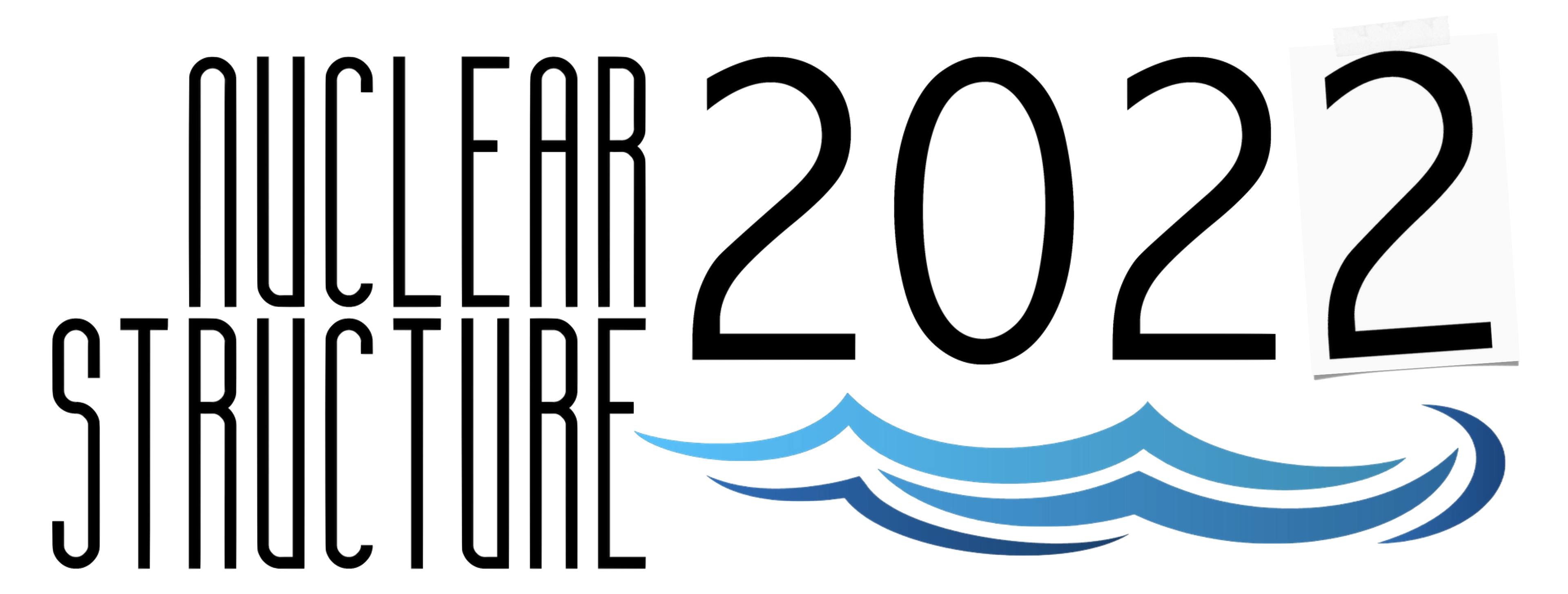Speaker
Description
Properties of proton-emitting nuclei along the $N \sim Z$ line in the vicinity of the proton dripline, can be a useful probe of nuclear structure. In particular, the ground-state spins of the $^{71}$Kr/$^{71}$Br mirror pair have been under debate for several decades driven primarily by the closely spaced (E$_{x}$ = 10 keV) first-excited state in the $^{71}$Br mirror partner [1,2]. Additionally, a significant enhancement in the $\beta$-decay branching to excited states in $^{71}$Br had been suggested [3]. This should not be the case, however, if this system was a perfect mirror where the decay is expected to be dominated by a ground-state to ground-state transitions.
To explore these ground-state structures and the mirror symmetry in the $^{71}$Kr/$^{71}$Br system, we have performed detailed $\beta \gamma$ and $\beta p$ decay spectroscopy of $^{71}$Kr. A cocktail beam of heavy-ions, including $^{71}$Kr, was produced through projectile fragmentation of a 140-MeV/nucleon $^{92}$Mo primary beam, accelerated by the Coupled Cyclotron Facility at the National Superconducting Cyclotron Laboratory (NSCL), and impinged upon a 152.2-mg/cm$^{2}$ Be target. The secondary beam was analyzed by passing the ions through the A1900 fragment separator and further purified using the Radio Frequency Fragment Separator (RFFS). These ions were implanted into a DSSSD in the Beta-Counting Station (BCS) coupled to the Segmented Germanium Array (SeGA), enabling $\beta$ and $\beta$-delayed proton spectroscopy to be performed using implant-ion correlations. Branching to the ${5/2}^-$ 407-keV state in $^{71}$Br and a delayed-proton branch feeding the first-excited ${2}^+$ 945-keV state in $^{70}$Se were observed. A detailed analysis of the $\beta$ response of the setup was performed using $^{70}$Br ions that were simultaneously implanted. From this analysis we were able to determine absolute $\beta$ intensities as well as quantify an important source of systematic uncertainty in these types of decay experiments. Intensities of the measured $\gamma$ transitions were used to build the low lying $\beta$-decay scheme of $^{71}$Kr. Consequently, we find the observed delayed-proton decay to ${2}^+$ state in $^{70}$Se provides firm evidence that the ground-state spin of $^{71}$Kr must be $J > 3/2$, consistent with mirror symmetry of the $^{71}$Kr and $^{71}$Br ground-state pair both having $J^{\pi} = {5/2}^-$.
[1] M. Oinonen et al., Phys. Rev. C 56, 745 (1997).
[2] P. Urkedal and I. Hamamoto, Phys. Rev. C 58, R1889 (1998).
[3] S. M. Fischer et al., Phys. Rev. C 72, 024321 (2005).
We acknowledge support from the US DOE, Office of Science, Office of Nuclear Physics under award numbers DE-FG02-94ER40848 (UML), DE-AC02- 06CH11357 (ANL), as well as DE-FG02-88ER40387 and DE-SC0019042 (OU); the NNSA through award numbers DE-NA0003180 (NSSC), DE-NA0000979 (NSSC), DE-NA0003221, DE-NA0003909 and/or DE-NA0002132; and the NSF under contract numbers PHY-1-102511 and PHY 14-30152. This work was performed under the auspices of the U.S. Department of Energy by Lawrence Livermore National Laboratory under Contract DE-AC52- 07NA27344.

